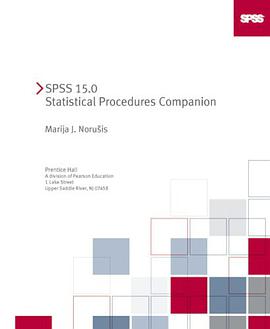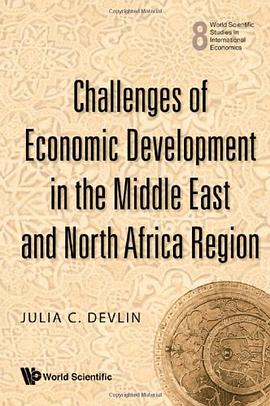

具體描述
Product Description
As the human population increases, many decisions concerning our use of natural resources will determine our standard of living and the quality of our environment. This reader-friendly book helps readers develop an understanding of how geology interacts with major environmental problems facing society. Included with every text, the Hazard City CD-ROM gives instructors meaningful, easy-to-assign, and easy-to-grade assignments based on the idealized town of Hazard City.
Focuses on five fundamental concepts of environmental geology: Human Population Growth, Sustainability, Earth as a System, Hazardous Earth Processes, and Scientific Knowledge and Values. Features new chapters on Impacts of Extraterrestrial Objects and Waste as a Resource: Waste Management. Presents new or extensively revised discussion of human population growth, Alaska earthquake of 2002, emerging global water shortage, cleaning Boston Harbor, and much more. Revises many figures to more clearly illustrate the topics under discussion, based on user feedback. An informative reference for anyone interested in learning more about the environment.
From the Back Cover
This brief paperback presents the basics of physical geology within the context of environmental applications to show how geology relates to life and society—showing us how the world works, how we can avoid or live with potential/natural hazards, and how geology interacts with major environmental problems facing people and society. Introduces philosophy and fundamental concepts, the structure of the Earth and plate tectonics, and the origin and significance of rocks and minerals. Addresses the major natural hazards including earthquakes, volcanic activity, rivers and flooding, landslides, and coastal processes; the major natural resources associated with the geological environment and the subject of pollution; global change, environmental management, and relationships between the environment and society. --This text refers to an out of print or unavailable edition of this title.
Excerpt. © Reprinted by permission. All rights reserved.
The main objective of Introduction to Environmental Geology, 2nd edition, is to help equip students—particularly those who intend to take only a single science course—with an understanding of the interactions between geologic processes and society. During the first half of the twenty-first century, as the human population increases and the use of resources grows, many decisions concerning our use of those resources, such as water, soil air, minerals energy, and space to live will determine our standard of living and the quality of our environment. Scientific knowledge combined with our values will dictate those decisions. Your charge, whether as a future leader or simply an informed citizen, is to choose paths of development that are good for people and the environment, that larger community that includes plants, animals, water, and air—in other words, the environment consisting of ecosystems that we and all living things depend upon for our well-being.
Earth's dynamic and changing environment constitutes one of the most compelling and exciting areas of study. Environmental geology is the application of geologic information to the entire spectrum of interactions between people and the physical environment. During a course in environmental geology, you will develop an understanding of how geology interacts with major environmental problems facing people and society. This is the essence of Introduction to Environmental Geology, 2nd edition. Our strategy with this text is to:
Introduce you to the basic concepts and principles of physical and environmental geology, focusing on earth materials and processes.
Provide you with sufficient information concerning natural hazards and the geologic environment so that you will be a more informed citizen. You will be better prepared to make decisions concerning where you live and how society responds to natural hazards and catastrophes such as earthquakes, volcanic eruptions, and flooding.
Help you develop an understanding of relationships between natural resources and pollution. We seek, find, and use resources and, as a result, may pollute our environment. Thus, it is important to know how we might minimize pollution problems.
Help you understand the basic concepts of environmental management as they relate to the geologic environment in areas such as waste management, environmental health, global change, and environmental assessment.
After finishing your course in environmental geology, you will be better prepared to make decisions concerning where you build or buy a home, what resources you choose to utilize, and appropriate environmental actions relevant to society and Earth's ecosystems from a local to a global scale.
Five Fundamental Concepts
To this end, this book introduces a device we call the "Fundamental Concepts of Environmental Geology." These five concepts are designed to provide a memorable, transportable framework of understanding that you can carry away from the class and use throughout life to make informed choices about your interaction with and effect upon geologic processes:
Human population growth: Population growth is the number one environmental problem. As population increases, so do our effects and demands on the environment.
Sustainability: Sustainability is the long-term environmental objective of providing for the future of humans and other living things who share the planet.
Earth as a System: The activities of human beings can have important effects on any or all of Earth's systems, often affecting the global environment.
Hazardous Earth processes, risk assessment and perception: Earth's hazardous processes have always occurred and will always occur. Human beings need to recognize the threat of hazards, assess the risk to life and property, and either avoid them or plan accordingly.
Scientific knowledge and values: Scientific inquiries often provide a variety of potential solutions to environmental problems. The solution we choose is a direct reflection of our value system.
These concepts are introduced in the first chapter and then highlighted throughout the text (look for the icon in the margin). By tying the content to these five principles, the text provides a framework for understanding that will extend far beyond the confines of this course and into your everyday life.
Organization
Introduction to Environmental Geology, 2nd edition, is well suited to your study of environmental geology, whether you are a geology major or are taking this class as a science elective. I have organized Introduction to Environmental Geology, 2nd edition, to naturally flow from the introduction of fundamental principles of environmental science and geology, to more specific information concerning how Earth works, to natural processes and hazards, to understanding natural resources and their management, with the objective of minimizing environmental degradation. We end with a detailed discussion of global change, focusing on climate and some important interactions between society and the geologic environment.
Introduction to Environmental Geology, 2nd edition, consists of 17 chapters arranged in four parts:
Part 1 introduces philosophy and fundamental concepts, the structure of Earth and plate tectonics, and the origin and significance of minerals and rocks. Thus, Part 1 presents fundamentals of physical geology with important environmental information necessary to understand the remainder of the text. Chapter 1 introduces five fundamental concepts of environmental science, with an emphasis on the geologic environment. Chapter 2 discusses the structure of Earth and the important subject of plate tectonics and how our planet works from a geologic perspective. Chapter.3 presents geologic information concerning rocks and minerals necessary for understanding environmental geology problems and solutions to those problems. In Chapter 3, we also introduce some of the fundamental principles of geology, including the law of original horizontality, the law of cross-cutting relationships, the concept of the depositional environment, the concept of the rock cycle, and the principle of magmatic differentiation.
Part 2 addresses natural hazards, including an introduction to natural hazards, (Chapter 4) earthquakes (Chapter 5), volcanic activity (Chapter 6), rivers and flooding (Chapter 7), landslides (Chapter 8), and coastal processes (Chapter 9). The intent is not to provide copious amounts of detailed information concerning these processes but to focus on the basics involved and the environmental concerns of earth processes and natural hazards.
Part 3 presents the major resources associated with the geologic environment and the subject of pollution. Important topics include water resources (Chapter 10), water pollution (Chapter 11), mineral resources (Chapter 12), energy resources (Chapter 13), soils (Chapter 14), and air pollution (Chapter 15). The focus is to present the basic principles concerning natural resources and to identify potential environmental problems and solutions.
Part 4 is concerned with the important topics of global change, environmental management, and relationships between environment and society. Chapter 16 discusses global change with a focus on global warming and stratospheric, ozone depletion. Finally, in Chapter 17, which is a "capstone," we discuss relationships between environment and society with topics such as environmental health, waste-management site selection, land-use planning, environmental law, environmental impact analysis, and how we may achieve the goal of obtaining environmental sustainability.
Major New Material in the 2nd Edition
The second edition of Introduction to Environmental Geology has three new chapters: Chapter 4, Introduction to Natural Hazards, discusses relations between hazardous events, land use, and human population; how we predict hazardous events; basic components of risk assessment; and how we perceive and adjust to natural hazards. Chapter 11, Water Pollution, focuses on the major water pollutants, processes that result in water pollution and how pollution may be minimized; water quality issues, and principles of water treatment. Chapter 15, Air Pollution, discusses the major air pollutants and their environmental effects.
The second edition directly addresses personal actions people may take to minimize their exposure to and damage from natural hazards. As, for example, what to do to prepare for earthquakes, floods, and hurricanes.
Finally, the second edition has new sections for Chapters 4 through 17 that revisit the five Fundamental Concepts introduced in Chapter 1. These concepts are also highlighted in the margin of the text where appropriate. Understanding of the five concepts is a primary learning objective of Introduction to Environmental Geology, 2nd edition.
Features of the Text
This book is sensitive to the study needs of students. Each chapter is clearly structured to help you understand the material and effectively review the major concepts. To help you use the material from the book, each chapter is organised with the following study aids:
Learning objectives that state clearly what you should be able to do upon completing the chapter.
Selected features, called Case History or A Closer Look, are added where appropriate to help you relate topics in the text to the world around you. Examples of A Closer Look features include: (1) the Gaia Hypothesis (Chapter 1), which introduces the idea of evaluating Earth as a system; (2) the importance of understanding the history of a river system with respect to flooding (Chapter 7); (3) principles and processes related to wetlands and acid mine drainage (Chapter 10); (4) relationships between plate tectonics and mineral resources (Chapter 12); (5) the process of radioactivity (Chapter 13); and (6) radon gas (Chapter 17).
A chapter summary reinforces the major points of the chapter to help you refocus on the important subjects.
The foundations of environmental geology are presented in Chapters 1 through 3, and Chapters 4 through 17 contain a discussion that revisits the five fundamental principles in terms of the material presented in the chapter.
Detailed references are supplied at the end of each chapter to provide additional readings and to give credit to the scholars who did the research reported in the chapter.
Key terms are presented at the end of the chapters. These will help you identify the important concepts and terminology necessary to better understand the chapter.
Review questions help with your review of important subject matter and provide a page number where the answer may be found.
Critical thinking questions stimulate you to think about some of the important issues in the chapters and try to relate these to your life and society.
The appendixes in Introduction to Environmental Geology, 2nd edition, are intended to add additional information useful in helping. you understand some of the more applied aspects of environmental geology This information may be most useful in supplementing laboratory exercises and field exercises in which you may participate. Specific topics include:
Identification of rocks and minerals with accompanying tables and suggestions.
Strength of rocks.
Introduction to topographic and geologic maps with specific information concerning how to read topographic maps, construct topographic profiles, and understand geologic maps.
Introduction to Digital Elevation Models (DEMs) and Global Positioning System instrumentation (GPS).
Discussion of how geologists determine and interpret geologic time.
A glossary of terms used in the field of environ mental geology.
著者簡介
Department of Environmental Studies
& Department of Geological Science
University of California, Santa Barara, CA
圖書目錄
讀後感
評分
評分
評分
評分
用戶評價
可怕的迴憶
评分可怕的迴憶
评分可怕的迴憶
评分可怕的迴憶
评分受不瞭這個...
相關圖書
本站所有內容均為互聯網搜索引擎提供的公開搜索信息,本站不存儲任何數據與內容,任何內容與數據均與本站無關,如有需要請聯繫相關搜索引擎包括但不限於百度,google,bing,sogou 等
© 2025 book.quotespace.org All Rights Reserved. 小美書屋 版权所有




















